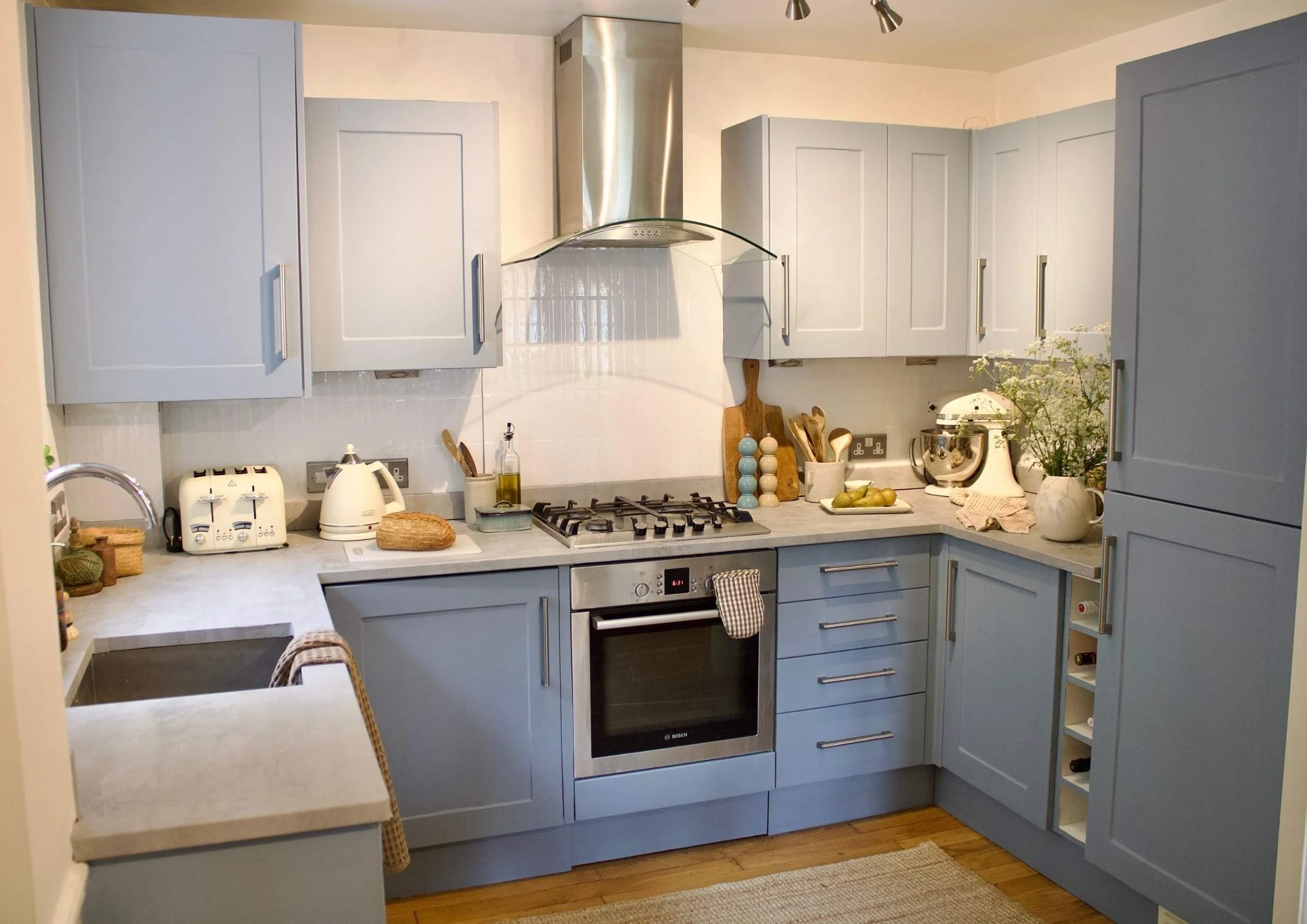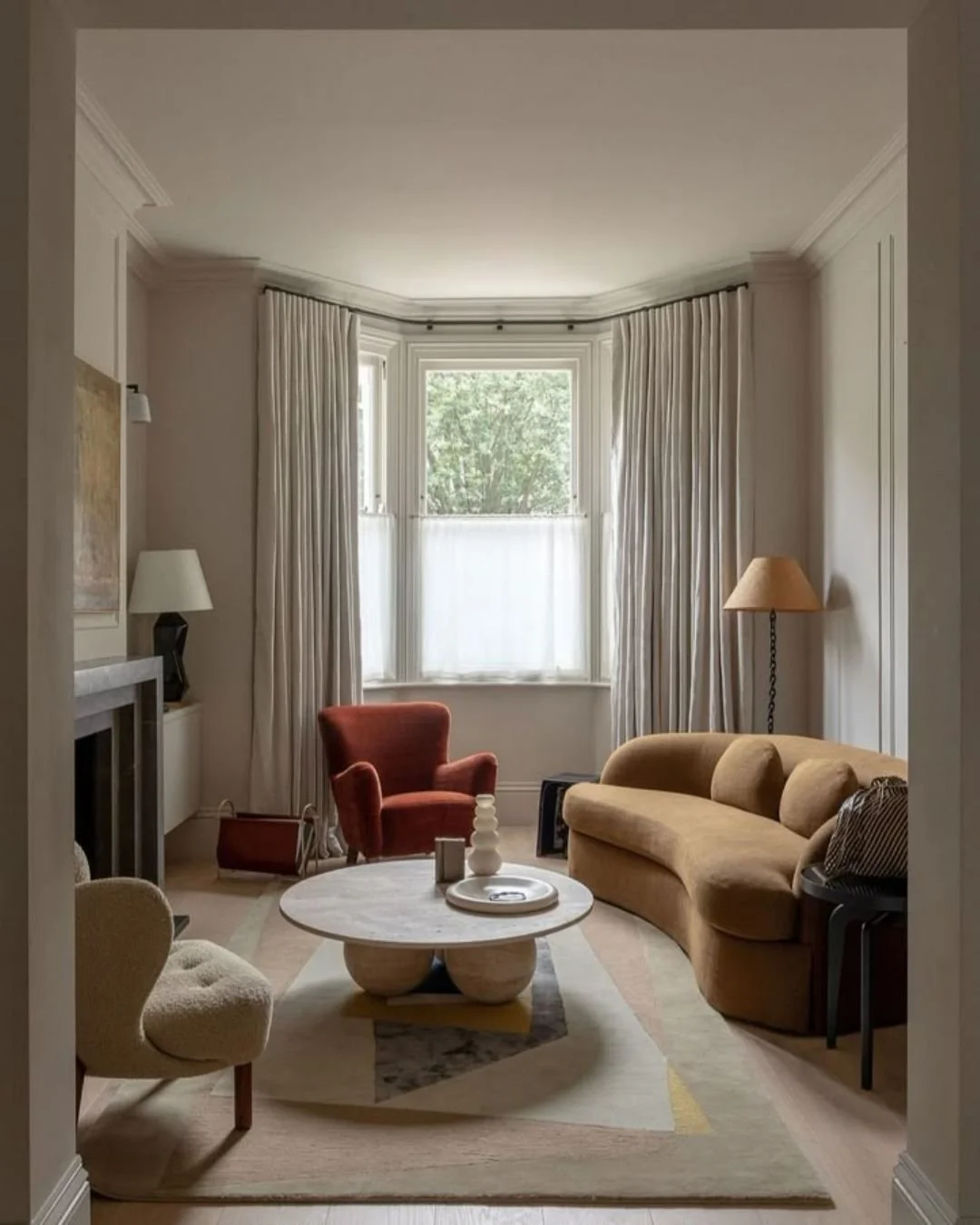How to decorate small spaces / Minimalist Interior Design in a Small House
How to decorate small spaces and maximise every inch
In this post, I’m sharing 5 decorating tips for achieving minimalist interior design in a small house. These are real-life solutions that are stylish, functional, and most importantly actually doable, even if you’re working with limited square footage and a realistic budget.
Living in a small space can be a real challenge, I know firsthand. I live in a two-bedroom apartment, and over the years, I’ve struggled with limited storage, over-cluttering, and the constant battle to keep things feeling calm. If you're currently living in an apartment or a compact home, believe me, I completely understand. You’re not alone.
The reality is, most interior design magazines and showrooms focus on large, open-plan homes filled with expansive furniture and luxurious finishes—beautiful, but often out of touch with how many of us actually live. Meanwhile, rent prices keep rising, mortgage rates are sky-high, and space has become one of the biggest modern-day luxuries.
That’s exactly why I work with clients to reimagine their small homes, not by adding more, but by doing more with less. Together, we create interiors that feel open, airy, and functional, even when space is tight. It’s all about finding smart ways to maximise every inch without sacrificing style or comfort.
1. Multi - Functional Spaces
Creating multi-functional spaces is one of the most effective ways to make every square foot count in a small home. By rethinking how each area of your home can serve more than one purpose, you unlock the potential to live more spaciously without needing to extend your home. To be honest, the most common issues I see in clients' homes stem from poor use of space—whether it’s a lack of storage, improper furniture layout, or simply not maximising the potential of each room. You want to design your home with your lifestyle needs in mind, think of home office that also functions as a guest bedroom, or a dining table that extends for entertaining but folds down to save space day-to-day. These seemingly small decisions actually have a big impact on how your space functions in everyday life. If you live in a smaller home, creating a space that feels intentional, organised, and functional is key. Some people convert closets into compact workstations, while others add bench seating to dinning rooms with hidden storage for tableware and linens. It’s all about finding those smart, subtle ways to tuck things away without sacrificing style or comfort.
Photo: Onekindesign
2. Play with Colour
When decorating small spaces, one of the most effective and often overlooked strategies is to play with colour in a bold and thoughtful way. Contrary to the common belief that painting a small room white will make it feel bigger, white can often come across as bland or uninspired in compact areas. Instead of defaulting to white, consider using warm, or deep hues that create a sense of intimacy and character. Colour adds depth and mood, making a space feel intentional rather than standard. Think vertically, drawing the eye upward can make a room feel more spacious. Consider painting the ceiling, using colour drenching or incorporating tall artwork.
Photo: Beambk
3. Curved Furnishings
In small spaces, round furniture can be a smart and stylish solution for maximising every inch. Unlike sharp-edged or bulky pieces, round tables and curved furnishings are more space-efficient, allowing for easier movvement and better flow in tight areas. Their smooth, rounded edges help soften the look of a room, creating a more open and inviting feel. Additionally, curved furniture is often a safer choice for households with children, reducing the risk of bumps and bruises in high-traffic zones. By choosing pieces that are both functional and thoughtfully designed, you can make a small space feel more spacious, comfortable, and family-friendly.
Photo: Studio Skey
4. Correct Scale and Size
When embracing minimalist interior design in a small house, choosing the right rug is more important than you might think. A rug that's too small can make your space feel even more cramped, while the right size helps define zones and create balance. Ideally, all furniture legs, or at least the front two legs of your sofa, should sit on the rug to ground the room visually. Avoid floating coffee tables or islands that aren't anchored to anything; they disrupt flow and make the space feel disjointed. Before investing in furniture, plan your layout carefully by taping it out on the floor to ensure everything fits both physically and visually. Proper scale and proportion are key to keeping a small space feeling open, functional, and thoughtfully designed. Choosing the right size furniture is more important than ever in a compact home—oversized pieces can overwhelm, while too-small items can look awkward and out of place. Thoughtful furniture choices and smart layout planning are essential to achieving a minimalist style that feels both spacious and serene.
Photo: Ostrali
5. Avoid over-cluttering
In minimalist interior design, especially in a small house, less truly is more. Avoid over-cluttering your space with too many pieces or decorative items; instead, focus on creating clear, open pathways and areas that allow for easy movement and visual breathing room. Regular decluttering is key—adopting a “one in, one out” policy helps keep things from piling up. I personally try to declutter my home often, tackling it in manageable steps—a drawer here, a side table there. When styling surfaces like sideboards, aim for balance: include a few intentional items for personality, but be sure to leave some empty space. That negative space is just as important as the décor itself, giving the eye a place to rest and helping the room feel calm and cohesive.
Photo: HouseNineDesign
I hope you found this post helpful and that it’s sparked some fresh ideas for your home. Redecorating and renovating can sometimes feel overwhelming, and it’s completely normal to feel a little stuck or unsure about where to start next. Whether you’re tackling a full room makeover or just adding a few finishing touches, having the right guidance can make all the difference.
That’s why I created The Design Fix — a monthly email delivered straight to your inbox, packed with practical, easy-to-follow tips and inspiring ideas to help you confidently transform your space. If you’re ready to feel more inspired, empowered, and excited about your home, I’d love for you to join the Design Fix.
Sign up for The Design Fix today and let me help you create a home you truly love—one step at a time.







